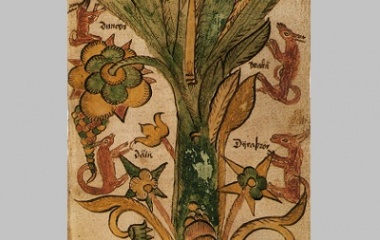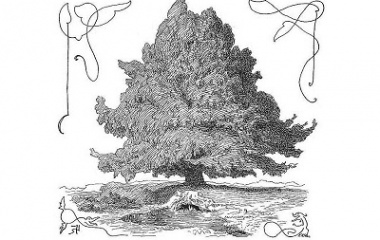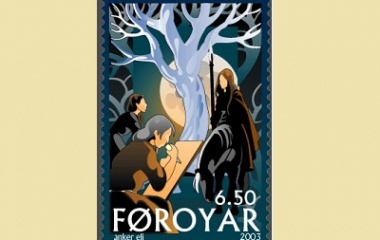What Is Yggdrasil?
In Nordic mythology, Yggdrasil (pronounced IG-druh-sill) is an ash tree which links the Nine Worlds. Some sources claim the name means the horse of Yggr’s ash tree, though various interpretations of the name exist. The god Odin was also referred to as Yggr, meaning terrible one. Since Odin rode his horse, Sleipnir, up and down the tree to travel between the Nine Worlds, the meaning of the name appears to be relevant in the context.
Source
The Poetic Edda, a collection of Old Norse poems by unknown authors and Prose Edda, written by historian Snorri Sturluson, both mention Yggdrasil. Both texts, written in the 13th century AD, refer to the mystical tree and its sacred nature.
Myths Connected to Yggdrasil
The Well of Urd (meaning destiny) and Yggdrasil are not considered to exist in a physical sense, but rather on a spiritual or mystical level. They are thought, by certain scholars, to also represent time. The well represents the past tense and the tree, the present tense. In the image of the tree, the water also has an important function. It feeds the roots of the tree from the well and is visible as dew, on the tips of the leaves. The dew then drips back into the well and starts the cycle again. The cyclic nature of the flow of water also represents time in a cyclical, rather than linear fashion.
Inside the Well of Urd, we find the Norns. The Norns are three powerful female beings who control the destiny of all the creatures of the Nine Worlds. Their names translate roughly from Old Norse as past, present and future. The inhabitants of the Nine Worlds are not totally controlled by their fate, but do have some ability to change its course. In the image of the tree, the dew returning to the well represents the ability to change the past and thus change how it affects the present. With the use of magic, practitioners are able to assert even more control over their destiny.
Three Roots
The Well of Urd is situated beneath the third root of Yggdrasil. According to the Prose Edda, the water from the Well of Urd would turn anything it came in contact with a bright white color, as the water was particularly sacred. Every day, the gods would travel over the Bifrost Bridge to hold council by the well.
The longest root of the tree ended in Niflheim, where the dead resided. Below the root, lay another well called Hvergelmir, meaning bubbling cauldron. A dragon called Nidhogg purportedly ate the roots of the tree and lived in the Hvergelmir well. The remaining root of the tree ended in the land of Giants, Jotunheim. This root also had a well beneath it, called Mimisbrunn. Its waters were said to be a source of prophecy, wisdom and poetry. Odin drank from the water and transformed into the god of the poets, seers and sorcerers, but at a cost – he had to give up one of his eyes!
Creatures in the Tree
It is surprising that the World Tree was able to survive with the destructive creatures it housed. An eagle kept an eye on the universe from the highest branches. The bark and leaves of the tree were constantly being nibbled on by four stags; Dvalin, Dain, Durathror and Duneyr. The leaves were also eaten by a goat called Heidrun. Even the honeydew the tree exuded, was eaten by bees. Luckily the Norns nurtured the tree and kept it alive!
Ask and Embla
The first two humans created in Norse mythology were called Ask and Embla, the Poetic Edda asserts. Ask comes from the word Askr which means ash tree and Embla means water pot. The Aesir gods created Ask and Embla from two tree trunks which had washed ashore. Once Odin imbued them with life, they were sent to Midgard, the realm of humans, to father the human species. The names Ask and Embla link directly to Yggdrasil and the Well of Urd, the main principles of Norse mythology. The connection also symbolized their belief in the complementary nature of masculinity and femininity and the necessity of both in order for life to exist.
The End of the World
Some sources claim that Yggdrasil trembling is a sign that the world will soon end, and that the final battle between good and evil – Ragnarok – will shortly commence. Purportedly, the tree would not be destroyed in the mighty battle. Two humans, who it is said will emerge from the tree, would then repopulate Earth.
Sacred trees feature in many religions and philosophies. They connect humans with the spiritual realm and represent the equality and interconnectivity of gods, man and nature. Religions that employ this harmonious view have existed for thousands of years and continue today in one form or another, bringing hope to a world of ever-increasing selfishness and greed.










